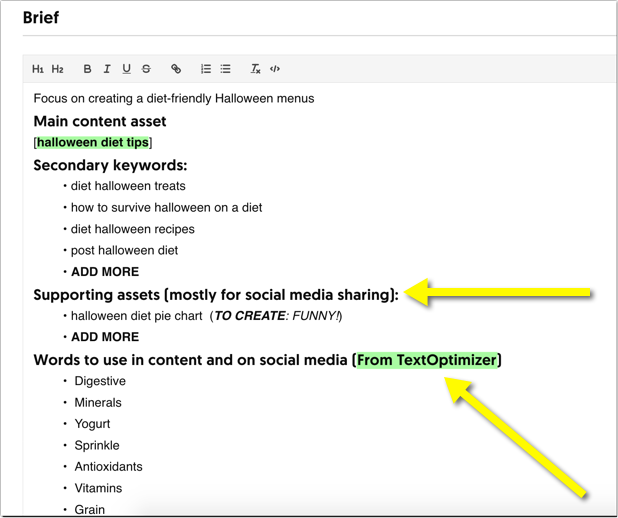
SEO is one of the youngest marketing disciplines out there, and it’s also incredibly fast-paced. It looks almost nothing like what it did when we started.
While the fundamental principle remains the same —SEO is about making websites easy to find and understand — the tactics involved are very different than they were 15, 5, and even 1 year ago
So what are the most important SEO trends for 2020 and how can you implement them?
Here’s what you should know for 2020, as well as key steps for implementing these trends and tactics.
SEO Trend #1: Mobile and Voice Search
We don’t yet know how big voice search is, but we do know that mobile search is going strong, and we have many sources to confirm that, including:
- Back in 2015, Google revealed that more people were using mobile search than desktop search in 10 countries, including the US and Japan
- In 2018, more than half of mobile traffic in the US was coming from mobile devices
- Last year consumers spent three and a half hours a day on their mobile devices
Consumers spend three and a half hours a day on their mobile devices. Click To Tweet
Consequently, Google has switched its priorities by introducing Mobile-First Index, which means that Google predominantly uses the mobile version of a page for indexing and ranking. In other words, if your page doesn’t look good on a mobile device, or if the mobile version has less content, you may lose rankings in both mobile and desktop search results.

Given that mobile device users often use voice search to find answers while on the go, it is safe to assume that voice search is getting popular, and these two trends are very well connected:
- Both mobile and voice users are likely to be looking for answers while in the middle of the task (so they need clear, concise answers right away)
- In both of the cases, the top result (which is often the featured snippet) is really what matters. So we are competing for the top result now, versus top 5 positions as we did a few years ago
How to Optimize Your Site for Mobile and Voice Search
- Obviously, make your site mobile-friendly and fast (page speed is important!)
- Adapt your content strategy to catch those featured snippet opportunities to outrank your competitors. Mobile users seldom have time to scroll, and with voice search there’s only one result being read to the user. This makes featured snippet optimization incredibly essential for your online visibilit — you are either there or nowhere.
There’s a lot to featured snippet optimization (which deserves a whole separate article which I already did), but it all comes down to:
- Researching current featured snippets for your important queries (and learning from them)
- Structuring your content with H2-H3 subheadings that address questions behind queries triggering featured snippets
- Providing quick, concise answers (no longer than 90 characters) below each subhead for Google to grab and feature.
If you include these steps in your writing guidelines for your content creators to use, you are halfway there:
- Use this writing checklist that includes both of the above (and more useful) guidelines
- Scale your content creation process using Narrato to build a team of content creators that do a good job following those guidelines. The beauty of this platform is that it matches you to the most suitable writers automatically and, after some time, you have a solid team that knows your requirements and creates content fast. In an era when you need a lot of content, and you need it fast, this is a life-saver:

SEO Trend #2: Semantic Search and Intent Optimization
Google moved away from exact-matching keyword optimization years ago, yet our industry is somewhat slow to keep up. These days, Google doesn’t use the actual string of words that are being typed in the search box. Instead, it looks at the query context and analyzes the possible search intent to deliver results.
You can see this all around the SERPs and even in Google Suggest results. I wrote a detailed article on semantic search, and here’s one of the examples from it:

Notice how Google interprets the query on the fly to realize:
- You may have lost your cat, but you may be interested in pet and animal control centers, not just cat facilities
- Your cat may have gone missing in the town of Halfmoon but it has legs, so chances are you may be able to find the cat in the nearby towns, including Clifton Park and Rensselaer
- You may also post on Craiglist or search there in case someone already found it—which is an absolutely awesome idea!
What does this tell us?
Google has got very good at understanding searcher intent, and old-school content creation methods that focus on a single keyword string don’t work.
We need to create content that solves problems. That’s what Google is after, and so are our potential customers.
How to Optimize Content for Semantic Search and Search Intent
Simply Searching Google to get an idea of how it is interpreting a query is a great first step. Do the same type of research I did with that cat missing query — look for other ways Google is trying to solve the problem for the user.
Using semantic research tools is another good idea. Text Optimizer is an intent optimization platform that helps you cluster any search query into related concepts and entities. It uses Google’s search snippets to come up with ideas to expand your initial copy to provide more solutions and meet Google’s and its users’ needs:

Based on semantic research, it will even help you build sentences based on common co-occurrence analysis of the terms you select:

If you are using a remote team of content writers or Narrato, it is a good idea to run TextOptimizer before creating your assignment and provide your writers with the list of concepts to cover.
SEO Trend #3: SERP Marketing and Content Diversification
For years now, Google has been taking steps to become a destination, not just a discovery project. With knowledge graph, quick answers, and interactive and visual results, Google is building an ultimate resource that can give comprehensive answers to any query.

Within one search result page, we see:
- Google.com/Travel suggestions
- Knowledge graph (that includes maps, user reviews, basic facts, etc.)
- Related videos (This search element is interactive because you can scroll through the carousel to see more videos)
- “People Also Ask” results (This box is also interactive: You can click any question to read answers and expand follow-up questions. Interestingly, a question you click determines the topic of further questions that appear. I find this quite eye-opening.)
- The visual results including more similar destinations, related searches, and more
- Organic “text” results which are somehow lost in-between
This is where the concept of “SERP marketing” lies: you need to stop focusing on organic listings and start optimizing for all the other search elements, including videos, images and “quick-answer” sections (“People Also Ask” and featured snippets).
You need to take each individual search result page as a whole to achieve brand visibility there.
How to Dominate Google with SERP Marketing
There’s a lot to be done to create an effective SERP Marketing campaign. Here are some steps to get you started:
Analyze Your Current Opportunities
At IMN, we are building an ultimate SERP marketing tool that helps you determine all important content formats that needs to be created to dominate your target queries:

The tool uses your current rankings to show where you are missing out. Use this tool to understand your current opportunities better and optimize for those.
Set Up Content Collaboration Strategy
Content diversification brings in both challenges and opportunities. On the one hand, you need to continually come up with quality content assets in various formats, which is incredibly hard to scale. On the other hand, you get to leverage more mediums and try more tools and tactics, which is pretty awesome.
Content collaboration is the tactic that can solve many issues and empower your marketing with more benefits, including natural backlinks, trust and shares. And the good news is there are great projects that help you build contacts to co-create content and scale it.
BizSwipe is one example that allows you to easily build B2B connections for content co-creation and marketing collaboration. You can use advanced filters and easy connection tools to find partners and influencers who can help you diversify your content strategy:

Organize Your Strategy Using an Editorial Calendar
For content collaboration and co-marketing opportunities, consider using an editorial calendar solution that will help you organize your campaigns.
ContentCal is a marketing collaboration platform that can help you organize your omni-channel content marketing strategy and boost its effectiveness:
Use its “Content Campaigns” feature to schedule your upcoming content assets and put all the ideas, goals and tasks in each campaign brief.

Creating a central dashboard for all your content plans to be visible for your whole team is key to consistent and effective content strategy. With ContentCal each team member responsible for a single piece of the puzzle will be able to see and contribute to the whole picture.
At the end of the day, content diversification lies at the foundation of omnichannel marketing that has multiple benefits (including cross-device compatibility, smoother shopping experience, creation of more marketing channels and more). So you may want to start working on it whether you are worried about your search visibility or not.
SEO Trend #4: Structured Data
This year has been huge for semantic data, with Google updating their initial guidelines and adding support for new types of structed data, including FAQPage, fact-check, and more. It is clear that Google is very interested in extracting more data from your pages and giving publishers more exposure in exchange.
The good news is that this gives SEOs a competitive advantage over those website owners who are not keeping up with Google’s moves.
As an example, here’s what FAQPage schema looks like in search results once you implement it:
This search snippet is interactive — you can click any question to unfold the answer, and from there, even get to the site for more answers:
How to Implement Structured Data
There are many tools, plugins and solutions, allowing any website owner to implement structured markup with no technical knowledge required. Here are a few options:
Conclusion
SEO is moving fast — it is a very exciting industry to be in. From the earlier days on, those people who were fast to “get it” found themselves ahead of slower-moving competitors. Use the tools and tips above to get ahead of yours in 2019 and beyond!

